What is mulching in gardening?

Mulching is a technique used in gardening to improve soil health, conserve moisture, control weeds, regulate temperature, prevent erosion, and enrich nutrients.
It involves covering the soil surface with a layer of organic or inorganic material, which serves as a protective barrier.
Benefits of Mulching
-
Soil moisture retention
Mulching helps to retain soil moisture by reducing evaporation and preventing water runoff. The mulch layer acts as a protective barrier, keeping the soil moist for longer periods and reducing the frequency of watering.
-
Weed suppression and control
Mulching effectively suppresses weeds by blocking sunlight and preventing weed seeds from germinating. A thick layer of mulch inhibits weed growth and minimizes the need for manual weeding or the use of herbicides.
-
Temperature regulation
Mulch acts as insulation for the soil, moderating temperature fluctuations. It keeps the soil cool in hot weather and provides insulation during cold periods, protecting plant roots from extreme temperatures.
-
Erosion prevention
Mulching plays a crucial role in preventing soil erosion. The mulch layer acts as a protective cover, preventing rainwater from washing away the topsoil. It also helps to break the impact of raindrops, reducing soil compaction and erosion.
-
Nutrient enrichment
Organic mulches gradually break down over time, releasing nutrients into the soil. As the mulch decomposes, it enriches the soil with organic matter, improving soil fertility and providing essential nutrients for plant growth.
Choosing the Right Mulch
-
Organic vs. inorganic mulches
Gardeners can choose between organic and inorganic mulches based on their specific requirements.
Organic mulches provide additional benefits such as nutrient enrichment and improved soil structure, while inorganic mulches offer long-lasting weed control and aesthetic appeal.
-
Considerations for mulch selection
When selecting mulch, several factors need to be considered, including the availability of materials, cost, aesthetic appeal, local climate, and the specific needs of plants.
It is important to choose a mulch that suits the gardening goals and the conditions of the garden.
Popular organic mulch options
-
Straw
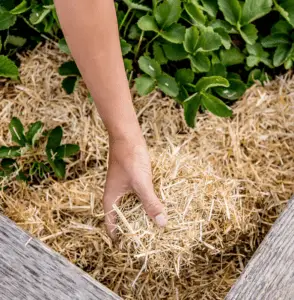
Straw is a popular and widely used organic mulch option in gardening. It is readily available, affordable, and easy to apply.
Straw mulch helps retain moisture in the soil, reducing the need for frequent watering and preventing soil erosion.
It also acts as a barrier against weed growth by blocking sunlight and suppressing weed germination. Straw mulch is commonly used in vegetable gardens, flower beds, and around fruit-bearing plants.
-
Wood Chips
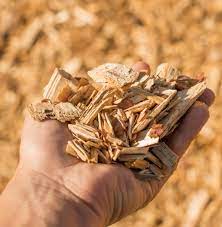
Wood chips are another commonly used organic mulch, especially in landscaping and large garden areas. They are derived from various types of trees and can be obtained from tree trimming services or purchased in bulk.
Wood chip mulch offers excellent weed suppression by forming a thick layer that inhibits weed growth.
It also helps conserve moisture in the soil, regulates soil temperature, and improves soil structure as it breaks down over time. However, it’s important to note that fresh wood chips can temporarily deplete nitrogen in the soil, so it’s advisable to allow them to age or use a nitrogen-rich fertilizer alongside them.
-
Compost
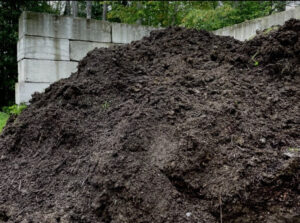
Compost is a valuable organic mulch option that provides numerous benefits to plants and soil health.
Composting involves the decomposition of organic matter, such as kitchen scraps, yard waste, and plant materials, into nutrient-rich compost.
When used as mulch, compost improves soil fertility, enhances microbial activity, and releases nutrients slowly over time. It also helps retain moisture and suppresses weeds. Compost can be spread around the base of plants or incorporated into the soil before planting.
-
Leaves
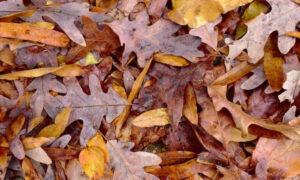
Leaves are a readily available and cost-effective mulching material, especially in autumn when they naturally fall from trees. Shredded leaves make excellent mulch as they form a dense layer that inhibits weed growth and retains moisture.
As they break down, they enrich the soil with organic matter, improving its structure and fertility. It’s important to shred the leaves before applying them as mulch to prevent them from matting together and blocking water and air flow.
-
Grass Clippings
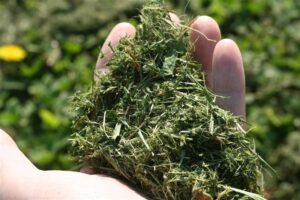
Grass clippings can be used as mulch, particularly if they are from organic lawns free of pesticides and herbicides. As a mulch, grass clippings help retain soil moisture and suppress weed growth.
They also provide a source of nitrogen, which can benefit nitrogen-loving plants.
However, it’s essential to use grass clippings in thin layers to avoid matting and allow for proper air circulation. Also, avoid using freshly cut grass clippings, as they can create an odor as they decompose.
-
Pine Needles

Pine needles, also known as pine straw, are a popular mulch choice in areas with pine trees. They have a natural acidic pH and work well as mulch for acid-loving plants such as azaleas, rhododendrons, and blueberries.
Pine needle mulch helps conserve moisture, suppresses weeds, and adds organic matter to the soil as it breaks down. It also provides an attractive appearance to garden beds and pathways.
Popular Inorganic Mulch Options
-
Gravel
Gravel is a popular inorganic mulch option that offers both aesthetic appeal and practical benefits. It is commonly used in pathways, driveways, and areas where a decorative and durable surface is desired. Gravel mulch does not decompose like organic mulches, making it a long-lasting option.
It allows for excellent drainage, preventing water pooling and reducing the risk of soil erosion. However, it’s important to note that gravel can retain heat, which may affect the soil temperature around plants, so it may not be suitable for heat-sensitive species.
-
Rubber Mulch
Rubber mulch, made from recycled rubber tires, has gained popularity in recent years as an alternative to organic mulches. It offers several advantages, such as durability, low maintenance, and weed suppression.
Rubber mulch does not decompose, providing a long-lasting solution for landscaping areas. It also helps in moisture retention and can act as a protective layer for the soil. It’s important to ensure that the rubber mulch used is free from harmful chemicals and toxins, especially when using it in vegetable gardens or areas with edible plants.
-
Landscape Fabric
Landscape fabric, also known as weed fabric or weed barrier, is a synthetic material used as a mulch option to suppress weed growth. It is typically made of woven or non-woven polypropylene and acts as a physical barrier between the soil and the environment.
Landscape fabric allows water and air to pass through while blocking sunlight, preventing weed germination and growth.
It is commonly used in flower beds, vegetable gardens, and under decorative rock or gravel.
Mulching Techniques
-
Mulch Placement and Depth
When applying mulch, it is important to place it evenly around plants, leaving a small gap around the base of the stems to prevent moisture buildup and potential rot. The ideal depth of mulch varies depending on the type of mulch used.
Generally, a layer of 2 to 4 inches (5 to 10 cm) is recommended for organic mulches, while inorganic mulches like gravel can be applied to the desired thickness.
-
Mulching Around Trees and Shrubs
When mulching around trees and shrubs, create a donut-shaped mulch ring rather than piling mulch against the trunk.
This helps to prevent excess moisture retention and potential diseases. Start the mulch ring a few inches away from the trunk and extend it outward to the drip line of the tree or the outer canopy of the shrub.
-
Mulching Vegetable Gardens
In vegetable gardens, mulch can help conserve moisture, regulate soil temperature, and suppress weed growth.
Apply a layer of organic mulch such as straw or compost around the plants, ensuring not to cover the stems or leaves. Leave space around the plants to allow for proper air circulation and prevent the risk of diseases.
-
Mulching Flower Beds
In flower beds, mulch not only enhances the aesthetic appeal but also provides practical benefits. Apply a layer of mulch around the flowers, leaving space around the stems.
The mulch layer helps retain moisture, regulate soil temperature, and prevent weed growth. However, avoid piling mulch too high against the stems of delicate plants.
Mulching Best Practices
-
Timing of Mulch Application
The best time to apply mulch is in the spring or early summer when the soil has warmed up and plants have emerged. This helps to retain moisture during the warmer months and suppress weed growth.
But, it’s important to avoid applying mulch too early in the spring when the soil is still cold and wet, as it can delay soil warming and seed germination.
-
Preparing the Soil Before Mulching
Before applying mulch, it’s essential to prepare the soil properly. Clear any weeds or existing vegetation, loosen the soil surface, and remove any debris. Additionally, ensure that the soil is adequately watered before mulching to promote better moisture retention.
-
Mulching Tips for Different Climates
The choice of mulch and the thickness of the mulch layer may vary depending on the climate. In hot and arid climates, organic mulches like straw or wood chips can help conserve moisture and regulate soil temperature.
In colder climates, a thicker layer of mulch may be needed to provide insulation and protect plant roots from freezing temperatures.
Mulching and Plant Health
-
Mulching for Disease Prevention
Mulching can contribute to plant health by preventing soil-borne diseases. Organic mulches act as a barrier, reducing the splashback of soil onto leaves and minimizing the spread of diseases. It’s important to avoid using infected or diseased plant materials as mulch, as this can introduce pathogens to healthy plants.
-
Impact of Mulching on Plant Growth
Mulching offers numerous benefits for plant growth and development. It helps to regulate soil temperature, conserve moisture, and provide a consistent and nutrient-rich environment for plant roots. By reducing weed competition, mulch allows plants to allocate more energy toward growth and productivity.
-
Mulching Considerations for Specific Plants
Different plants may have specific mulching requirements. For example, acid-loving plants like azaleas and blueberries benefit from organic mulches such as pine needles or pine bark that gradually decompose and acidify the soil.
On the other hand, plants sensitive to moisture, such as succulents, may require a lighter mulch or no mulch at all to prevent excessive moisture retention.
Mulching and Sustainable Gardening
-
Environmental Benefits of Mulching
Mulching is an eco-friendly gardening practice with several environmental benefits. It helps reduce water evaporation, conserves soil moisture, and minimizes the need for frequent watering.
Mulch also improves soil structure and fertility over time as it decomposes, reducing the need for synthetic fertilizers.
-
Mulching for Water Conservation
One of the significant advantages of mulching is its water conservation properties. By reducing evaporation from the soil surface, mulch helps plants access moisture for a more extended period, reducing the frequency of watering. This is particularly beneficial in areas with limited water resources or during periods of drought.
-
Using Recycled Materials as Mulch
In sustainable gardening, using recycled materials such as mulch is a great way to minimize waste and promote environmental stewardship.
Materials such as shredded leaves, grass clippings, and composted organic matter can be utilized as mulch, providing nutrients to the soil and reducing the need for disposal.
Common Mulching Mistakes to Avoid
-
Over-mulching
One of the most common mistakes in mulching is applying too much mulch. Excessive mulch can suffocate plant roots by preventing oxygen exchange and lead to root rot. It’s important to maintain an appropriate mulch depth, typically around 2-4 inches, to ensure proper air circulation and avoid suffocating the plants.
-
Incorrect Mulch Placement
Improper mulch placement is another mistake to avoid. Mulch should be spread evenly around the plants, leaving a small space around the stem or trunk to prevent moisture buildup and potential rotting.
Avoid piling mulch against the base of trees or shrubs, as it can promote the growth of pests and diseases.
-
Choosing Unsuitable Mulch
Choosing the wrong type of mulch for your specific needs can hinder plant growth and health. Consider factors such as soil type, plant requirements, and climate when selecting mulch.
For example, some plants may prefer organic mulches with specific pH levels, while others may require a more moisture-retentive or well-draining mulch.
Maintenance and Renewal of Mulch
-
Mulch Replenishment
Mulch gradually breaks down over time, so it’s essential to replenish it periodically. Check the mulch layer annually and add a fresh layer if it has become thin or has decomposed significantly.
This helps maintain the desired benefits of mulching, such as moisture retention, weed suppression, and temperature regulation.
-
Mulch Decomposition and Replacement
As organic mulch decomposes, it contributes to soil fertility and structure. However, over time, the mulch may lose its effectiveness, become compacted, or develop weed growth.
Consider replacing the mulch layer every two to three years or as needed to ensure optimal performance and plant health.
FAQs
-
How often should I apply mulch?
Mulch should be replenished annually or as needed, depending on its decomposition and thinning.
-
Can I use mulch in potted plants?
Yes, mulch can be used in potted plants to help retain moisture and regulate soil temperature. Use a thin layer of mulch around the base of the plants, avoiding contact with the stem.
-
What is the best time of year to mulch?
The best time to apply mulch is in spring or early summer when the soil has warmed up and plants have emerged.
-
Should I remove old mulch before applying new mulch?
It is generally recommended to remove old mulch before applying a new layer. This allows better air circulation and prevents excessive buildup.
-
How thick should the mulch layer be?
The ideal mulch layer thickness is typically around 2-4 inches. Avoid over-mulching, as it can lead to root suffocation.
-
Can I use mulch in a vegetable garden?
Yes, mulch is beneficial in a vegetable garden as it helps retain moisture, suppress weeds, and regulate soil temperature. Use organic mulches that decompose gradually.
-
Is it necessary to water the plants after mulching?
Watering plants after mulching is important to ensure moisture reaches the roots. Mulch helps retain moisture, but watering is still necessary, especially during dry periods.
-
H. Can I mulch around newly planted seedlings?
-
-
Maintain Distance: Leave a small gap between the mulch and the stems of the seedlings to prevent excessive moisture retention around the delicate stems. This helps reduce the risk of stem rot or fungal diseases.
- Use Light Mulch: Opt for a lighter mulch material, such as straw or shredded leaves, when mulching around seedlings. Avoid heavy or compacted mulches that can hinder the seedlings’ emergence and growth.
- Monitor Moisture: Check the moisture levels regularly to ensure that the seedlings are not experiencing excessive waterlogging or drought. Adjust watering frequency accordingly to maintain a balanced moisture level.
-
Weed Control: Mulching around seedlings helps suppress weed growth, which can compete with the young plants for nutrients and water. However, be diligent in removing any weeds that manage to sprout through the mulch to prevent them from overtaking the seedlings.
-
-
How long does mulch last?
The longevity of mulch depends on the type of material used and environmental conditions. Organic mulches, such as wood chips or straw, typically break down over time and may need replenishment every two to three years.
Inorganic mulches, such as gravel or rubber mulch, can last longer but may require occasional maintenance to prevent weed growth or compaction.
-
Can I use any type of wood chips for mulching?
Not all wood chips are suitable for mulching. Avoid using freshly cut or green wood chips, as they can rob nitrogen from the soil during the decomposition process.
Opt for aged or composted wood chips, which have undergone decomposition and are less likely to compete with plants for nutrients.
The Short Answer
Mulching in gardening refers to the process of covering the soil surface around plants with a layer of organic or inorganic material.
This protective layer serves various purposes, such as conserving moisture, suppressing weed growth, moderating soil temperature, and enhancing overall plant health.
Mulching is an effective technique that gardeners use to create a favourable environment for plants, promote healthy growth, and reduce maintenance requirements.

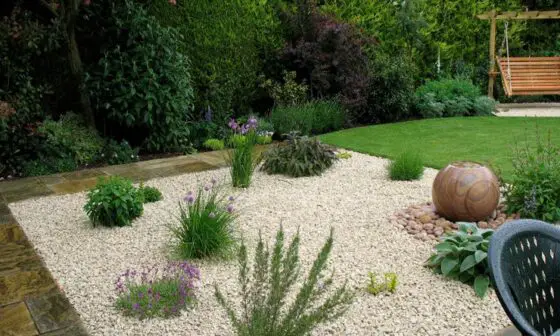
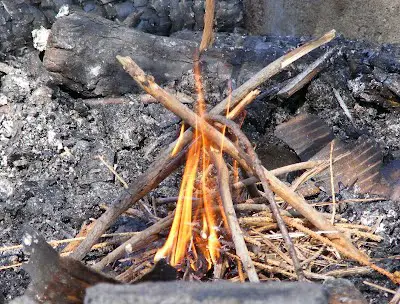
Comments are closed.